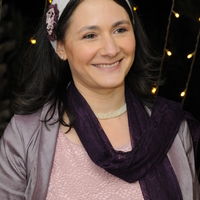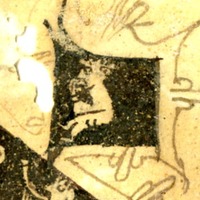
Tamar Kadari
Tamar Kadari, former Dean of the Schechter Institute of Jewish Studies in Jerusalem, where she is a Senior Lecturer in Midrash and Aggadah. Her synoptic edition of Midrash Song of Songs Rabbah, based on extensive manuscript research, was launched in 2014 on the Schechter website. She is the author of Minkhah L'Yehudah: Julius Theodor and the Redaction of the Aggadic Midrashim of the Land of Israel (Jerusalem: Schechter/Leo Baeck, 2017), a study of a major figure in the modern study of rabbinic literature and his influence on the modern study of midrash.
less
Related Authors
Judith Olszowy-Schlanger
Ecole Pratique des Hautes Etudes
Irina Wandrey
University of Hamburg
Mauro Perani
Università di Bologna
Justine Isserles
Ecole Pratique des Hautes Etudes
Ilona Steimann
Hochschule für Jüdische Studien, Heidelberg
Andreas Lehnardt
Johannes Gutenberg-Universität Mainz
Ruth Langer
Boston College
Uri Ehrlich
Ben Gurion University of the Negev
Stefan C. Reif
University of Cambridge
Malachi Beit-Arié
The Hebrew University of Jerusalem
InterestsView All (6)










Uploads
Papers by Tamar Kadari
also contains a collection of short midrashim, including several seafaring travelogues. The way in which the codex is layered, and the fascinating connections between the compositions added to it, make an important contribution to our understanding of the role and significance of the Hebrew codex in the Middle Ages, as an evolving and multilayered anthology. The codex became a sort of one-volume library in its own right.
This is a Hebrew version of the former English article.
By Tamar Kadari
This article examines the rabbinic interpretation of the Song of Songs from a new perspective. The common division into categories as peshat (literal meaning), allegory, and mysticism, is too general. In order to fully reveal the richness and multifaceted nature of the rabbinic exegesis of the Song of Songs, one needs to use tools taken from literary studies.
The paper is divided into three parts. The first section examines the number of speakers in the song and their identity. Who is the poetic speaker and to whom is the song addressed? The second section focuses upon the situation of utterance: What event is described in the Song of Songs and what is the atmosphere? The third section deals with the question of genre and identifies two major rabbinic approaches: A song of praise and a wedding song.
The understanding of these three parameters not only determines the content and mood of the Song, but also the nature of its holiness, status, and function. The different midrashic examples discussed in the article illustrate a wide range of exegetical approaches, demonstrating that the rabbis were not blind to the poetic character of the Song of Songs. Rather, their midrashim reinforce and expand upon the unique stylistic features that characterize the biblical song.
The different midrashic examples illustrate that the usage of these parameters reveals a wide range of exegetical approaches. They determines not just the content and mood of the Song, but also the nature of its holiness, status and function. Furthermore, as I demonstrate, the rabbis were not blind to the poetic character of the Song of Songs; rather, their midrashim reinforce and expand upon the unique stylistic features that characterize the biblical song.
also contains a collection of short midrashim, including several seafaring travelogues. The way in which the codex is layered, and the fascinating connections between the compositions added to it, make an important contribution to our understanding of the role and significance of the Hebrew codex in the Middle Ages, as an evolving and multilayered anthology. The codex became a sort of one-volume library in its own right.
This is a Hebrew version of the former English article.
By Tamar Kadari
This article examines the rabbinic interpretation of the Song of Songs from a new perspective. The common division into categories as peshat (literal meaning), allegory, and mysticism, is too general. In order to fully reveal the richness and multifaceted nature of the rabbinic exegesis of the Song of Songs, one needs to use tools taken from literary studies.
The paper is divided into three parts. The first section examines the number of speakers in the song and their identity. Who is the poetic speaker and to whom is the song addressed? The second section focuses upon the situation of utterance: What event is described in the Song of Songs and what is the atmosphere? The third section deals with the question of genre and identifies two major rabbinic approaches: A song of praise and a wedding song.
The understanding of these three parameters not only determines the content and mood of the Song, but also the nature of its holiness, status, and function. The different midrashic examples discussed in the article illustrate a wide range of exegetical approaches, demonstrating that the rabbis were not blind to the poetic character of the Song of Songs. Rather, their midrashim reinforce and expand upon the unique stylistic features that characterize the biblical song.
The different midrashic examples illustrate that the usage of these parameters reveals a wide range of exegetical approaches. They determines not just the content and mood of the Song, but also the nature of its holiness, status and function. Furthermore, as I demonstrate, the rabbis were not blind to the poetic character of the Song of Songs; rather, their midrashim reinforce and expand upon the unique stylistic features that characterize the biblical song.
by Dr. Tamar Kadari, Schechter Institute of Jewish Studies
Supported by the Israel Science Foundation
I am pleased to announce that Midrash Shir HaShirim Rabbah: A Synoptic Edition is now available online as part of the Midrash Project on the Schechter Institute of Jewish Studies website.
The synoptic edition includes all the textual witnesses to Midrash Shir HaShirim Rabbah: manuscripts, editio princeps, Yalkut Shimoni and all Genizah fragments.
Here is the link:
https://schechter.ac.il/midrash/shir-hashirim-raba/
and a glimps on the literary study of Midrash and Aggadah by Jonah Fraenkel and his disciples.